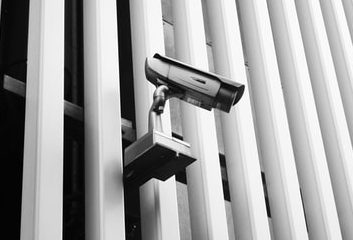As the pandemic rages, experts note the need for further investment in robust public healthcare. Although the Indian Constitution does not recognize a fundamental right to health, the Supreme Court has recognized that the right to life subsumes a similar interest, and it has also enshrined a constitutional obligation to provide health facilities to all. Yet the health needs of prisoners have been neglected. More than two decades ago, the Supreme Court upheld the protection of prisoners’ health. It reasoned that people in prison suffer a ‘double handicap’: not only do they not enjoy equal access to the medical expertise to which free citizens are entitled, they are also more vulnerable to health hazards due to prison surroundings.
Irrespective of Constitutional guarantees, the Model Prison Manual upholds every prisoner’s right to basic health needs. These include a balanced diet, medical care, access to clean drinking water and accommodation, and cubicles with sufficient ventilation and lighting. However, prisons consistently underspend on health infrastructure, and consequently only one medical worker caters to nearly 243 inmates and a staff vacancy of nearly 30 per cent. This skewed ratio is all the more problematic when rapid testing and timely isolation measures are crucial to curtailing the spread of the virus.
Governments continue to violate the Supreme Court’s mandate. The State bears the burden of ensuring the dignity of prisoners. Yet in March 2020, the Supreme Court noted that degrading prison conditions persist. It directed all states and prison authorities to take immediate measures to provide adequate medical assistance. The guidelines included measures such as transferring prisoners for decongestion or medical assistance, adopting response plans in consultation with medical experts, and setting up monitoring teams. Nearly four months on, there is no official public data to verify whether the directives have been implemented. A large number of prisoners continue to test positive for the virus.
Consistent with practice elsewhere across the globe, several state prisons have released inmates en masse. Reports suggest that many of these discretionary classifications are based on the nature and severity of the offence, and arbitrarily exclude more vulnerable prisoners facing health risks. The exclusion of specific categories of prisoners from release, such as foreign nationals and persons booked for economic crimes, is without basis. Experts have raised concerns about why prisoners who have been released now were unable to secure bail earlier. All these measures run counter to releasing inmates, and are perhaps an alternative for authorities to avoid grappling with deaths in custody or the health problems that infected inmates face.
The India Justice Report 2019 pointed out that inmates have a low life expectancy and suffer from numerous infectious diseases. Such conditions exist despite specific legislation and rules to tackle epidemics, manage prison hospitals, and schedule regular health check-ups. In reality, prison hospitals function erratically. They often lack proper equipment and the quality of treatment is reliant on an overworked corps of staff.
Prison decongestion does little to slow viral spread unless accompanied by practical measures to address health. Additionally, fresh arrests, many of which are groundless, have resulted in an influx of new inmates, which further escalates risk. Overcrowding has many causes, especially within the existing bail framework in India. For example, district-level committees in charge of reviewing cases and monitoring prison conditions do not function regularly, which results in prison overstays and delays in processing bail to eligible inmates. Courts, too, frequently postpone bail hearings, and most prisoners receive subpar legal representation. They are rarely present in court as they must depend on scarce police escort services. Excessive and expensive bail bonds, coupled with the poor financial conditions of most inmates, make it impossible to secure release even if eligible. Post-release, many prisoners are stranded homeless or cannot afford to return home.
Inmates eagerly await family visits, but that practice has been abandoned during the lockdown, with few alternatives yet in sight. However, one promising recourse is that some prisons have operationalized regular video calling facilities and installed more payphones.
Governments must now think creatively to address health in prisons. Studies highlight that artificial intelligence systems can be used for video surveillance to ensure social distancing protocols, thermal screening, efficient allocation of employees in shifts, and automated disinfection systems. Experience also shows that financial flexibility and autonomy in decision making helps avoid unnecessary bureaucratic delays. Personalized prison management and collaboration with outside businesses can improve food quality, sanitation, medical facilities and prisoners’ behaviour.
COVID-19 has clarified the inadequate healthcare that prisoners across India receive. A failure to address this health crisis layers a new informal punishment atop the formal one that courts mete. It has to stop.
Note: This article gives the views of the authors, and not the position of the Social Policy Blog, nor of the London School of Economics.





1 Comments